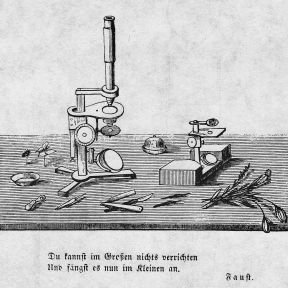Theories of Personality
From Aristotle to Sigmund Freud and Abraham Maslow, countless theories and concepts for understanding personality have been proposed. Throughout history, these and other great minds sought to answer questions not only about what personality is and how best to describe it, but also what causes personality differences, including those that make people more or less functional and resilient.
Some theories are still being tested, while others have fallen out of favor. Some compete while others complement one another. A look at some major ideas in personality psychology, both historical and recent, offers a sense of the many ways to think and talk about this complex subject.
On This Page
Using the Big Five traits (or five-factor model) as a foundation, Five-Factor Theory proposes that the development of common personality traits is largely determined by biological factors, especially genetics. This view was inspired in part by research indicating that ratings on measures of personality are influenced by one’s genes and that other, non-genetic developmental factors (such as adoptive parents) seem to play a surprisingly small role.
The theory’s creators distinguish enduring personality traits from “characteristic adaptations,” such as attitudes or strivings, that are shaped by one’s innate disposition as well as external forces.
The theory was first proposed in the 1990s by psychologists Robert McCrae and Paul Costa Jr. McCrae and Costa also created the NEO Personality Inventory in the 1970s
Though they have similar names, the model (which is embraced by many researchers) is a way of describing how personality traits are organized—that is, into the Big Five personality dimensions. The theory is a way of explaining how personality traits develop and change.
While personality traits are clearly related to genetics, one’s inheritance does not account for all personality differences. The environmental influences shared by siblings, such as a certain kind of parenting or childhood household, appear to play a minor part. Other factors, potentially many, must be at work.
One view, sometimes called Social Investment Theory, proposes that individuals’ personal investment in new social roles, such as by becoming a spouse or starting a job, helps explain personality development and change over time. In new roles, people are exposed to costs and benefits of behaving in certain ways, potentially shifting a person’s way of being over time—even given that the person’s personality is influenced by genetics.
Multiple researchers have helped develop it. One proponent is psychologist Brent Roberts, who with colleagues in the ’00s, wrote about a “social investment principle." (They have also called their concept the Neo-Socioanalytic Model.)
In a new job, one may be rewarded for being punctual and putting in work to complete tasks, or incentivized to get along with others. Interpersonal or familial roles, such as being in a new relationship, may also affect personality traits.
Yes: The social investment view suggests that people with certain traits will be more drawn to and more likely to invest in certain kinds of roles. The experience of inhabiting those roles may in turn influence their personality, potentially by reinforcing existing tendencies—for example, a conscientious person might choose a career that ultimately makes her more conscientious.
Even someone who shows certain tendencies—to act aggressively or passively compared to others, for example—won’t necessarily behave the same way in every situation or kind of social interaction. (The authority of the person one confronts, or whether one is in public, may make a difference.) Some personality theorists have sought to weave situational factors into how personality is conceived.
In one theory, the cognitive-affective personality system (CAPS), “cognitive-affective mediating units” are thought to interact with each other and with the characteristics of different situations to produce the patterns of behavior that distinguish individuals. These “units” may include psychological factors such as an individuals’ expectations and beliefs, goals and values, and emotional responses.
CAPS was developed by psychologists Walter Mischel and Yuichi Shoda in the 1990s. They sought to resolve an apparent conflict between findings of both a level of consistency in individual characteristics and variability in behavior across different situations.
No. A person may be more aggressive, reserved, or energetic in some situations and less so in others. But across many different situations, the person may still tend to be, generally speaking, more or less aggressive, reserved, or energetic than other people are.
While traits are widely accepted as fundamental to personality, theorists often combine them with other elements as part of a multi-level view. Narrative identity is one of these elements. In short, some propose that the particular narrative details of a person’s important life experiences—and how the person relates them to each other and derives meaning from them—fills out the complex portrait of who one is compared to others. While each person’s self-composed life story contains countless pieces of information, researchers have tried to identify common factors that differentiate these narratives.
The psychologist most associated with narrative identity is Dan McAdams. In the 1990s, he developed a view of personality in which three levels coexisted: dispositional traits relevant to general tendencies; how one deals with challenges and tasks in specific contexts; and an identity based on stories about the self.
In a recent study, proponents of the narrative identity view offered evidence for a tentative “Big Three” factors: autobiographical reasoning, or change in one’s understanding of one’s self or past; structural aspects, including overall coherence of the life story; and motivational and affective themes, encompassing aspects like positive or negativity and sense of agency.
In contrast to modern trait theories, those rooted in psychoanalytic ideas have tended to emphasize the potential role of early development in shaping personality. Sigmund Freud, the father of psychoanalysis, described personality, in part, as comprising three components: the instinct-driven “id,” the morality-bound “super-ego,” and the relatively temperate “ego.” The interactions between these elements were proposed to help explain an individual’s behavior. He also believed that childhood experiences have a major impact on a person’s personality.
Many theorists who followed Freud (and whose thinking is often described using the term psychodynamic rather than psychoanalytic) refined or branched out from his ideas. One of them was Carl Jung, who proposed psychological “types” that inspired the popular test known as the Myers-Briggs Type Indicator.
While they have influenced popular understanding of personality, they generally lack the empirical support of contemporary theories and do not have a central place in current personality science. However, some researchers continue to work in areas informed by psychodynamic ideas—such as those who study attachment orientation and the extent to which it relates to childhood.
Traumatic events or internal conflicts during early development were proposed as influences on personality. Identification, or adopting characteristics of someone else in one’s life, was another factor thought to play a role.
Freud-inspired theorists have emphasized different proposed factors in personality formation. For example, “Neo-Freudians” such as Jung, Alfred Adler, and Karen Horney challenged Freud’s emphasis on sexual and aggressive impulses, focusing more on social and cultural factors.
Humanistic psychology, developed in the mid-20th century by figures such as Abraham Maslow and Carl Rogers, focused the spotlight on individuals and their positive qualities, including their drive to achieve their full potential.
Maslow is famously known for his hierarchy of needs, with basic needs, such as nourishment and safety, toward the bottom, and self-actualization at the top. He argued that people who reach self-actualization—activating their self-perceived human potential, exhibit what he called a “coherent personality syndrome.” Rogers framed a healthy personality as the result of a match between one’s perceived self and the self one should be.
Among other characteristics, Maslow proposed that self-actualized people tended to be creative, compassionate, realistic, and drawn to helping others. As he described it, self-actualization is a relatively rare achievement—he cited historical figures such as Lincoln and Einstein as examples of self-actualized people.
The ideas of humanistic psychologists bear similarities to existential psychologists (such as Viktor Frankl)—theorists in both fields share an interest in the capacity of individuals to shape their own lives. Humanistic psychology also helped inspire positive psychologists, who have sought to focus attention on individuals’ character strengths and virtues.














